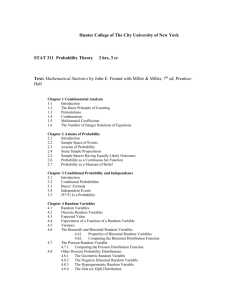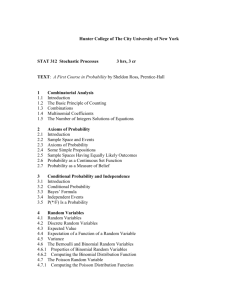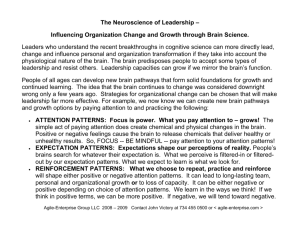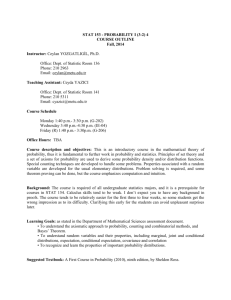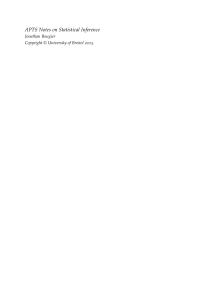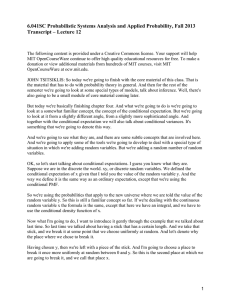Stats 325: Information about the Mid
advertisement
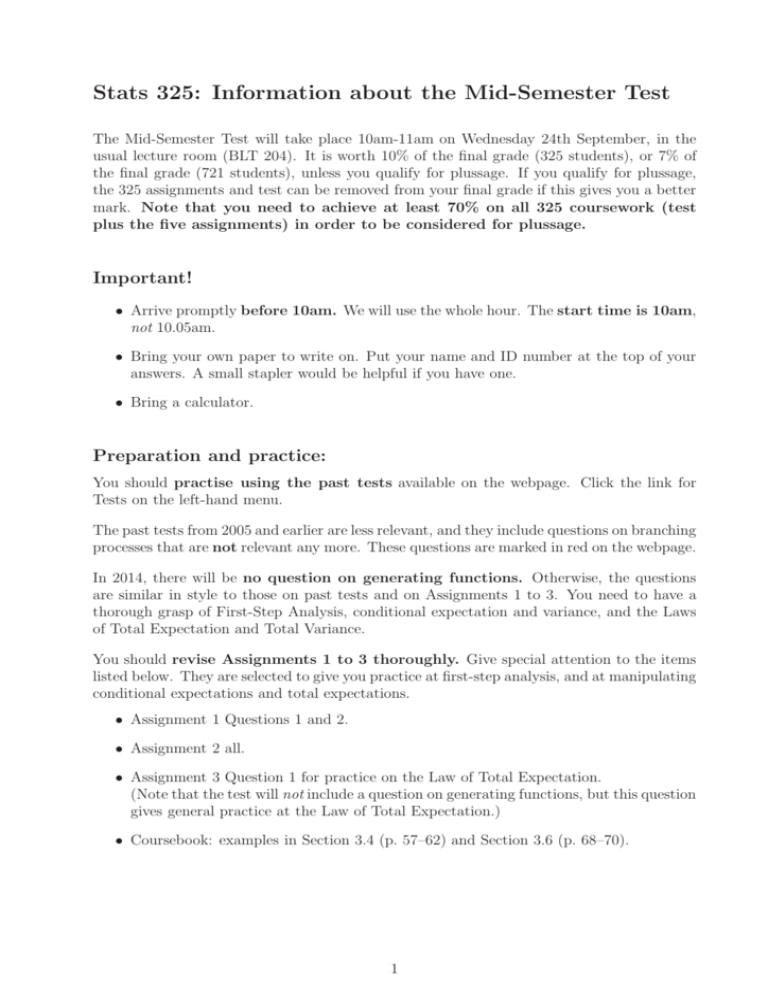
Stats 325: Information about the Mid-Semester Test The Mid-Semester Test will take place 10am-11am on Wednesday 24th September, in the usual lecture room (BLT 204). It is worth 10% of the final grade (325 students), or 7% of the final grade (721 students), unless you qualify for plussage. If you qualify for plussage, the 325 assignments and test can be removed from your final grade if this gives you a better mark. Note that you need to achieve at least 70% on all 325 coursework (test plus the five assignments) in order to be considered for plussage. Important! • Arrive promptly before 10am. We will use the whole hour. The start time is 10am, not 10.05am. • Bring your own paper to write on. Put your name and ID number at the top of your answers. A small stapler would be helpful if you have one. • Bring a calculator. Preparation and practice: You should practise using the past tests available on the webpage. Click the link for Tests on the left-hand menu. The past tests from 2005 and earlier are less relevant, and they include questions on branching processes that are not relevant any more. These questions are marked in red on the webpage. In 2014, there will be no question on generating functions. Otherwise, the questions are similar in style to those on past tests and on Assignments 1 to 3. You need to have a thorough grasp of First-Step Analysis, conditional expectation and variance, and the Laws of Total Expectation and Total Variance. You should revise Assignments 1 to 3 thoroughly. Give special attention to the items listed below. They are selected to give you practice at first-step analysis, and at manipulating conditional expectations and total expectations. • Assignment 1 Questions 1 and 2. • Assignment 2 all. • Assignment 3 Question 1 for practice on the Law of Total Expectation. (Note that the test will not include a question on generating functions, but this question gives general practice at the Law of Total Expectation.) • Coursebook: examples in Section 3.4 (p. 57–62) and Section 3.6 (p. 68–70). 1 Question outlines The questions may include, but are not restricted to, questions of the following types. 1. A transition diagram might be given, with boxes, arrows, and probabilities, similar to (but not the same as) this sketch: B A C STOP You might be asked to calculate the expected time taken to get through the system, to the box ‘Stop’. This will correspond to the expected number of steps taken. It will be equivalent to the expected number of arrows traversed from the beginning to the end of the system, in the same way as we saw on Assignment 2. For Practice: Assignment 2; Past tests. 2. You might be asked to find the expected number of times you pass through one or more given boxes before stopping, using first-step analysis: for example, the expected number of times you go through box B. For Practice: Assignment 2; Past tests. 3. A transition diagram might be given with two possible exits: similar (but not the same as) this sketch: B A EXIT 2 EXIT 1 You might be asked to find the probability of finishing in Exit 1, using first-step analysis. For Practice: Assignment 1; Past Tests. 4. Random variables X and Y might be defined with a conditional structure, e.g. Y X |Y ∼ ... ∼ . . . hinvolves Y i . . . You might be asked to find conditional and total expectations and variances, and understand how to use probability as a conditional expectation. A formula sheet is provided for the Law of Total Expectation and the Law of Total Variance. For Practice: Assignments 2 and 3; Coursebook examples in Sections 3.4 and 3.6. Good Luck! 2
